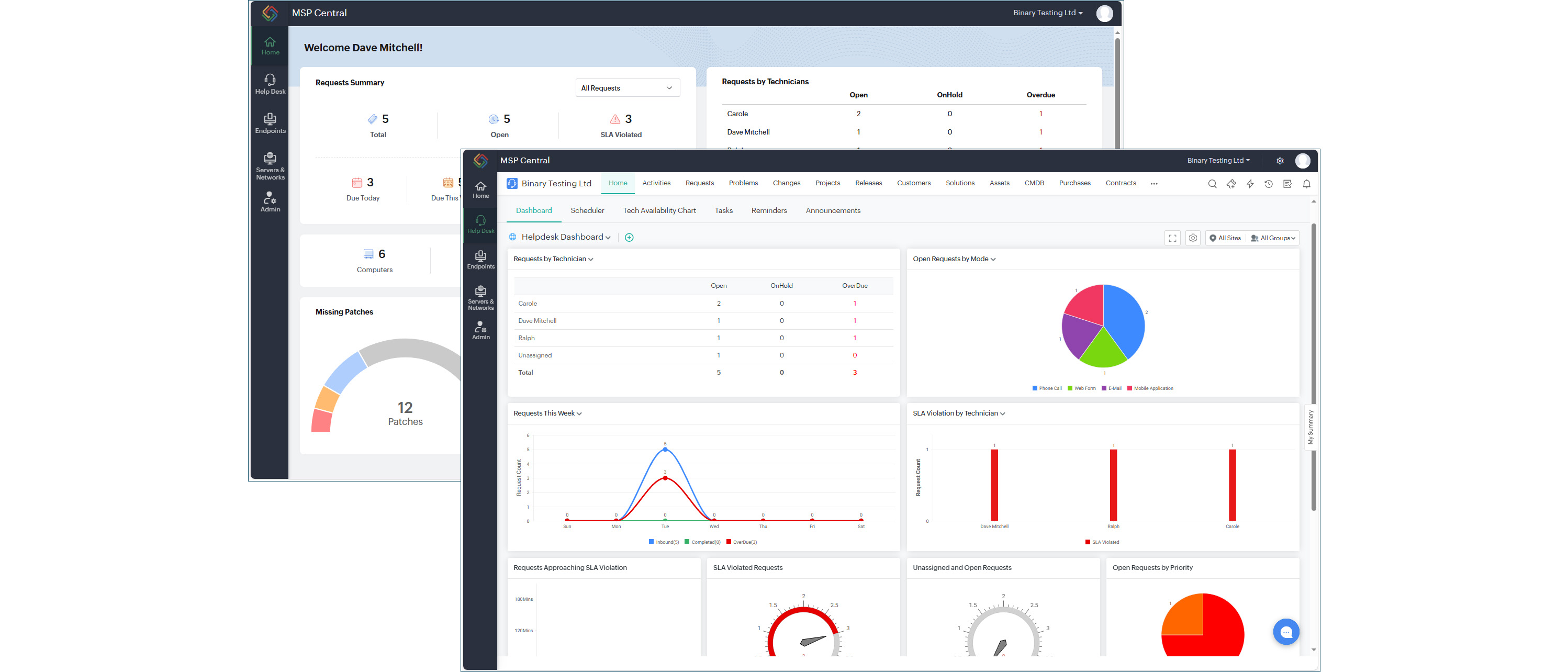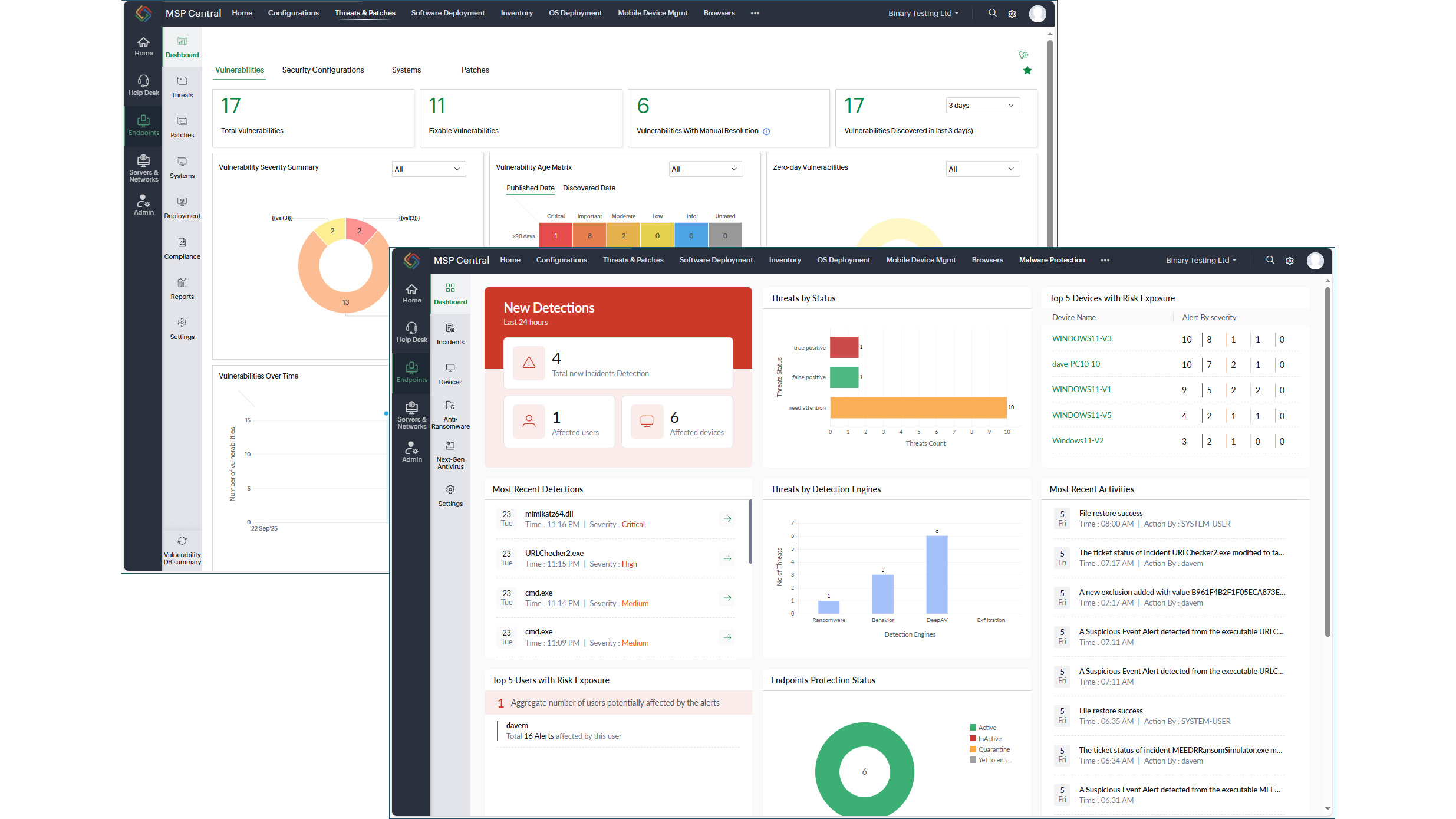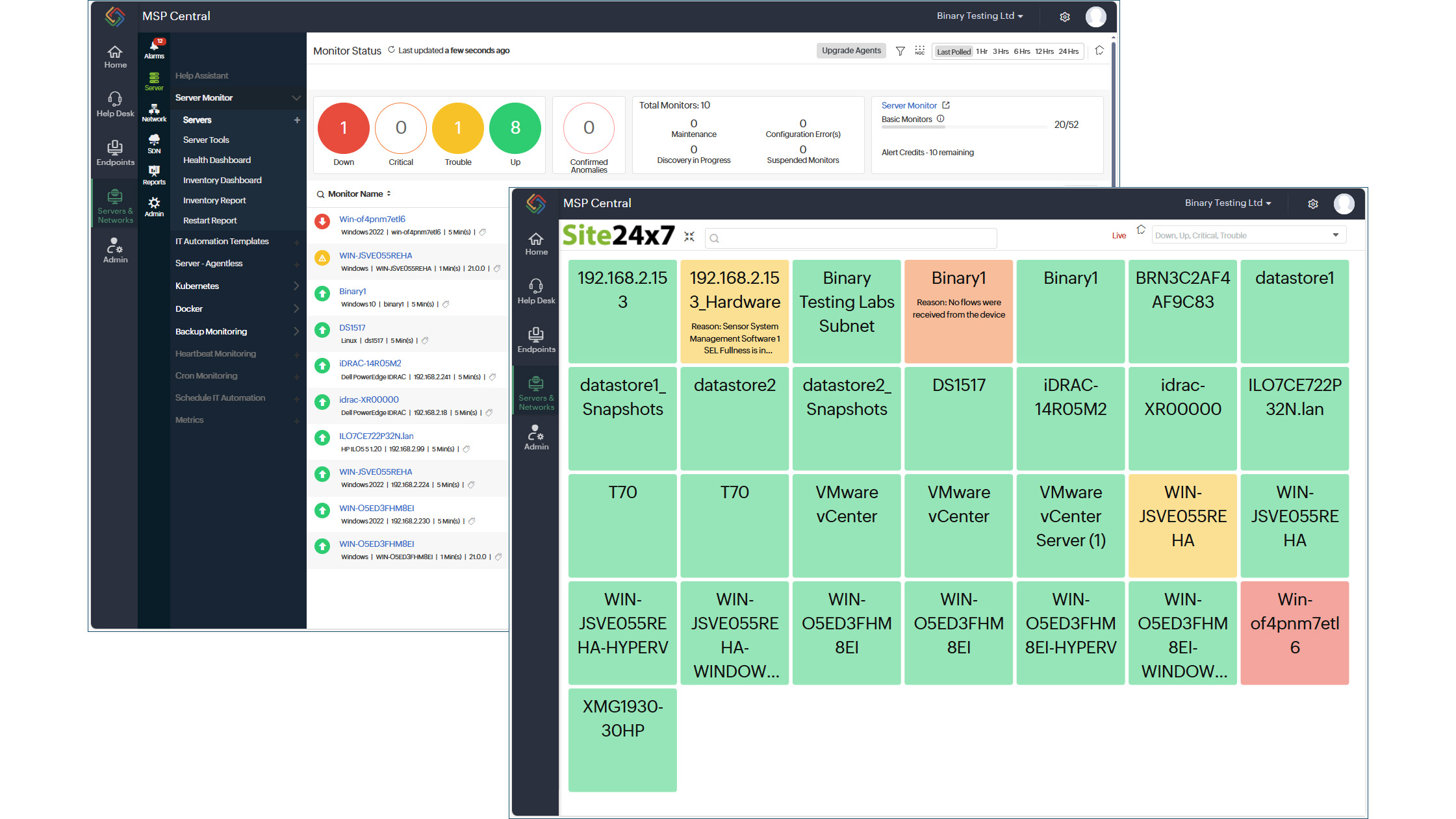ManageEngine MSP Central review: A big buffet of IT support, endpoint security, and network management services
Deployment isn't easy, but MSP Central offers a remarkable range of IT services wrapped up in a single cloud management portal

-
+
Good value
-
+
Wealth of support features
-
+
Strong endpoint security
-
+
Centralized cloud management
-
+
Modular design
-
-
Steep learning curve
-
-
Limited integration between modules

ManageEngine is a key player in the Zoho Corporation software and services empire and offers an extensive range of IT management products. Its MSP Central is designed to take managed services to the next level as it aims to provide a unified professional service automation (PSA), endpoint security and management, plus an advanced server and network device monitoring solution.
PSA services are provided by ManageEngine's ServiceDesk Plus, endpoints are looked after by Endpoint Central, while network device monitoring comes courtesy of its Site24x7 SaaS platform. A key feature that will appeal to MSPs is the solution is built to work with multiple tenants and customers and has all core functions integrated into a single cloud portal.
ManageEngine MSP Central: Deploy and manage
We signed up for the 30-day trial of MSP Central, which enables all three main components and doesn't require any up-front payment details. It only took a few minutes to create our account, and we were then presented with our MSP Central portal.
The home page presents a basic overview showing all help desk, technician, and support ticket activity, an at-a-glance status of computers, and graphs for patch status and endpoint health. It's easy to navigate as a left menu provides quick access icons for help desk, endpoints, servers, and networks, and admin settings.
Dive deeper and you'll find each component offers an extensive range of features, but the portal doesn't overwhelm you as it only displays the relevant services in upper ribbon menus for the selected module. Each one also opens with a status dashboard showing all important information, although at present, their home pages are static and cannot be customized.

ManageEngine MSP Central: Help desk services
To use the help-desk module, your first task is to create customers, sites, and users, where the latter are your technicians. During user creation, you decide what access privileges each one has, the customers, sites, and groups they are responsible for, and which of the three MSP Central modules they can access.
The help desk home page presents a detailed activity dashboard of all support requests, making it easy for admins to see who is handling them and those that have violated the service level agreements (SLAs) set for the customer. Each technician gets their own personal portal where they can view their current workload and create entries for support requests, incidents, problems, projects, and so on, and you can provide them with a range of custom templates to help streamline creation.
Sign up today and you will receive a free copy of our Future Focus 2025 report - the leading guidance on AI, cybersecurity and other IT challenges as per 700+ senior executives
Change management employs automated workflows to handle the planning, validation, approval, and rollout phases and also uses predefined and custom templates to simplify the processes. Asset management requires a lightweight remote probe service to be installed on a Windows host in each site so it can scan the local network, discover SNMP-compliant devices, and populate the portal with their details.
A self-service portal is provided for end users to send support requests, and it provides access to a knowledge base to help them diagnose and solve problems without involving a technician. The Zia conversational AI-powered service can also reduce workloads as it provides ML-based predictive intelligence to analyze support tickets and provide troubleshooting assistance.
ManageEngine MSP Central: Endpoint protection
The endpoint module offers an impressive range of features, including antivirus, anti-ransomware, vulnerability detection, data loss prevention (DLP) and removable device controls. Modules are also provided for device provisioning, mobile protection, patch management, app controls, and even remote support.
Endpoint agents are required on all protected devices and can be downloaded from the portal or deployed using ManageEngine's on-premises distribution server or one of many supported directory services. We had no problems deploying the agent to our Windows 10/11 test systems and versions are also available for macOS and Linux systems.
We did come across an issue with our Windows Server 2022/2025 hosts as the malware protection module doesn't support Windows Server OSes, and the portal will alert you to this in its devices view. However, if you want to extend features such as patch management to these hosts, you will need to load the agent.
The malware protection dashboard opens with a detailed summary of all detected threats and options to drill down for more information. The agents initially run in a passive audit mode and when you're ready, you can swap them all to the 'Kill and Quarantine' policy and change the detection sensitivity from standard to aggressive.
The ransomware protection service has some smart features, along with machine learning behavioral analysis, it uses Microsoft's VSS to take copies of files every three hours to a tamper-proof area on each endpoint. If a ransomware attack is detected and deemed a true positive, you can select the resolve option to rollback infected files using the most recent clean copy.
ManageEngine MSP Central: Site24x7

For agentless discovery and monitoring of SNMP and WMI Windows devices, this module requires an on-premises poller service installed to a local Windows or Linux host, and a lack of integration means it can't use the same probe as the help desk asset management service. We loaded the Site24x7 poller on a Windows Server 2022 host, and if you want high availability, you can add another on a different host.
It then proceeded to find all our network devices, assign predefined threshold templates, and add them to its resource utilization dashboards. More detailed information about hosts and their applications can be gleaned by installing server agents with ones available for a wide range of OSes.
We loaded the agents on our Windows Hyper-V hosts and could view all VM details, including their status, CPU and memory usage, plus host virtual switch and storage utilization. We could also control our VMs from the Management Actions window by remotely starting, stopping or restarting them.
Along with options to monitor Kubernetes, Docker, and Veeam backup services, you have integrated NetFlow support, which we used to pull in detailed flow data from our WatchGuard firewall. It also includes a network configuration manager (NCM), which backs up device configurations, monitors and compares changes, and ensures they are all documented and approved.
ManageEngine MSP Central review: Is it worth it?
General pricing details for all MSP Central modules and add-ons are available on the ManageEngine store website, and it offers an online quote service where you select the number of help desk technicians, endpoints, servers, and network devices you want to support and choose monthly or yearly billing. The modular design also allows businesses to pick and choose the components they want as there are no bundles or mandatory licensing requirements.
There's no denying MSP Central offers an incredible range of features for the price, but the sheer number and limited integration between them presents an extremely steep learning curve – this isn't a support solution that's going to be up and running in a few days. That said, it does provide MSPs with a sophisticated range of cloud-managed services, and ManageEngine has big plans as it intends to amalgamate even more of its standalone management products into MSP Central.
Dave is an IT consultant and freelance journalist specialising in hands-on reviews of computer networking products covering all market sectors from small businesses to enterprises. Founder of Binary Testing Ltd – the UK’s premier independent network testing laboratory - Dave has over 45 years of experience in the IT industry.
Dave has produced many thousands of in-depth business networking product reviews from his lab which have been reproduced globally. Writing for ITPro and its sister title, PC Pro, he covers all areas of business IT infrastructure, including servers, storage, network security, data protection, cloud, infrastructure and services.
-
 Google CEO Sundar Pichai thinks software development is 'exciting again' thanks to vibe coding — but developers might disagree
Google CEO Sundar Pichai thinks software development is 'exciting again' thanks to vibe coding — but developers might disagreeNews Google CEO Sundar Pichai claims software development has become “exciting again” since the rise of vibe coding, but some devs are still on the fence about using AI to code.
By Ross Kelly Published
-
 15-year-old revealed as key player in Scattered LAPSUS$ Hunters
15-year-old revealed as key player in Scattered LAPSUS$ HuntersNews 'Rey' says he's trying to leave Scattered LAPSUS$ Hunters and is prepared to cooperate with law enforcement
By Emma Woollacott Published
-
 Westcon-Comstor partners with Fortanix to drive AI expertise in EMEA
Westcon-Comstor partners with Fortanix to drive AI expertise in EMEANews The new agreement will help EMEA channel partners ramp up AI and multi-cloud capabilities
By Daniel Todd Published
